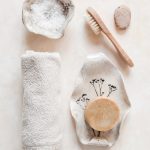In a world where exclusivity, craftsmanship, and experience reign supreme, fashion and food have found an unlikely but irresistible intersection: luxe afternoon tea collaborations. This isn’t your grandmother’s tea time with cucumber sandwiches and Earl Grey. We’re talking tiered trays of couture-inspired desserts, handbags sculpted from fondant, and pastries wrapped in edible monograms. Across the globe, high-end fashion houses are collaborating with luxury hotels and pastry chefs to create limited-edition afternoon teas that blend gastronomy with glamour.
It’s not just about the sweets—it’s about storytelling, branding, and creating an immersive world where fashionistas and foodies alike can sip, snap, and savor. In this essay, we explore the rise of fashion-meets-dessert collaborations, what makes them so culturally magnetic, and how this trend reveals the evolving language of luxury.
A Historical Ritual with a Modern Twist
The concept of afternoon tea dates back to 19th-century England, when Anna, the Duchess of Bedford, popularized the idea of a light meal between lunch and dinner. Traditionally featuring finger sandwiches, scones, and tea, it soon became a refined social affair. Over time, it evolved into a luxurious experience, especially in grand hotels across London, Paris, and Hong Kong.
But in the last decade, afternoon tea has undergone a transformation. It’s no longer just about tradition—it’s about theatricality. Enter luxury fashion brands, who saw in afternoon tea not just a hospitality opportunity, but a canvas.
Suddenly, high tea became a platform for brand expression—think macarons with Chanel’s interlocking C’s or éclairs topped with Louis Vuitton’s signature Damier print. These aren’t just desserts; they’re edible extensions of fashion’s most iconic aesthetics.
Why Fashion Brands Are Sweet on Afternoon Tea
On the surface, a collaboration between a French couture house and a London pastry chef might seem like a novelty. But look closer, and the logic is clear:
Brand Immersion: In a saturated digital world, consumers crave tangible experiences. A limited-edition tea set lets fans step inside a brand’s universe—if only for 90 minutes.
Social Media Gold: These teas are made for Instagram. The visual appeal of tiny desserts shaped like perfume bottles or chocolate stilettos draws massive attention online, effectively becoming organic marketing content.
Cultural Storytelling: Afternoon tea becomes a form of narrative expression. Brands can tie their heritage, new collections, or iconic motifs into flavors and presentation.
Exclusivity and Prestige: These are timed, seasonal experiences—often available only for a few weeks and requiring advance bookings. For luxury brands, it reinforces scarcity and status.
The Artistry Behind the Plate
At the heart of these collaborations are pastry chefs—artists in their own right—who are tasked with translating fashion into food. This isn’t easy. Designers speak in silhouettes, fabrics, and palettes. Pastry chefs must reimagine that language in ganache, sponge, and glaze.
Take, for example, a Dior-themed tea at a five-star hotel in Tokyo. The patisserie menu included a rose mousse shaped like the iconic Lady Dior bag, complete with a sugar-crafted handle. A Hermès collaboration in Paris might serve orange-blossom macarons in shades that echo its seasonal scarves, while a Burberry-inspired scone might use ingredients like rhubarb and rose—modern yet quintessentially British.
Every element—from the china to the table linens—is considered. Menus are printed in typefaces that mimic fashion house logos. Tea blends are curated to complement dessert profiles. Even the service might reflect the brand’s signature tone—elegant, minimal, or avant-garde.
Global Hotspots of High-Fashion Teas
These collaborations are not confined to one region—they’re a global phenomenon, often taking place in luxury hotels known for high-end hospitality:
The Ritz-Carlton, Tokyo hosted a Fendi-themed afternoon tea with mini cakes inspired by the Peekaboo bag.
Claridge’s in London has partnered with multiple fashion brands for its Fashion Week teas, featuring designers like Victoria Beckham and Mulberry.
The Peninsula Hong Kong has offered collaborations with Chanel, showcasing desserts that mirror runway looks and classic pieces.
Le Meurice in Paris, a jewel in the Dorchester Collection, teamed with Dior to present a tea where every bite reflected the essence of French couture.
These pop-up events usually align with product launches, anniversaries, or Fashion Weeks—moments when the industry is already buzzing.
The Psychology of Edible Luxury
Why do people flock to these events, often paying hundreds of dollars for tea and sweets? It comes down to the psychology of accessible aspiration.
Luxury fashion items—bags, dresses, shoes—are often financially out of reach for most consumers. But a $100 afternoon tea that allows you to taste Chanel or sip Gucci? That feels indulgent yet attainable. It becomes an affordable way to engage with luxury culture.
Moreover, the multisensory nature of food creates deeper memory associations. When you eat a YSL-inspired raspberry tart or sip a signature blend created by Prada, you’re not just tasting—it’s a sensual interaction with the brand.
From Dessert to Digital: A Lifestyle Experience
Fashion brands understand that today’s consumer doesn’t just want a product—they want a lifestyle. And afternoon tea has become an experiential form of branding.
Menus often include QR codes linking to behind-the-scenes videos of how the desserts were made, or even previews of upcoming collections. Some luxury hotels offer exclusive gift bags containing mini perfumes, branded napkins, or skincare samples to extend the experience beyond the table.
In other cases, guests who attend certain teas are invited to preview new fashion lines or given booking priority at pop-up stores. It’s all part of a strategy that blurs the line between indulgence, exclusivity, and commerce.
The Rise of the ‘Edible Collab’ Economy
The rise of collaborative tea sets is part of a wider trend—the edible collaboration economy. From limited-edition cocktails inspired by sneaker drops to chef-designed chocolates that reflect art exhibits, brands are increasingly using food as a creative and commercial extension of their identity.
In this economy, the dessert tray is no longer a sideshow—it’s the main event. And fashion brands, always ahead of the curve in experiential marketing, are leading the charge.
The Future of Fashion-Infused Gastronomy
As digital fatigue rises and consumers hunger for real-life beauty and tactility, we can expect more brands to use food as a storytelling medium. AI-generated designs may one day pair with algorithm-created flavor profiles. Augmented reality could turn tea sets into interactive exhibitions. But one thing will remain the same: luxury will always be about emotion, craftsmanship, and desire.
Whether it’s a petit four painted with the color of the season or a scone wrapped in edible silk, the intersection of fashion and food is here to stay. And afternoon tea—a ritual steeped in history—is its most elegant, delicious canvas.
Final Thoughts: Sweet, Stylish, and Significantly More
Luxe afternoon teas inspired by fashion brands are more than Instagram-worthy treats. They are symbols of cultural convergence, artistic collaboration, and evolving consumer desire. They remind us that luxury is not just something we wear—it’s something we experience, something we taste, something that sparks joy on the tongue and delight in the soul.
So the next time you sip jasmine tea while biting into a lavender ganache shaped like a designer shoe, remember: you’re not just eating a dessert—you’re participating in a narrative, a brand legacy, and a moment of curated beauty that’s equal parts sweet and stylish.




No Comment! Be the first one.